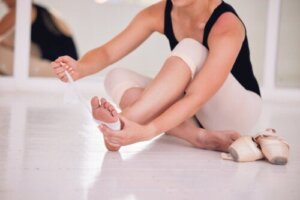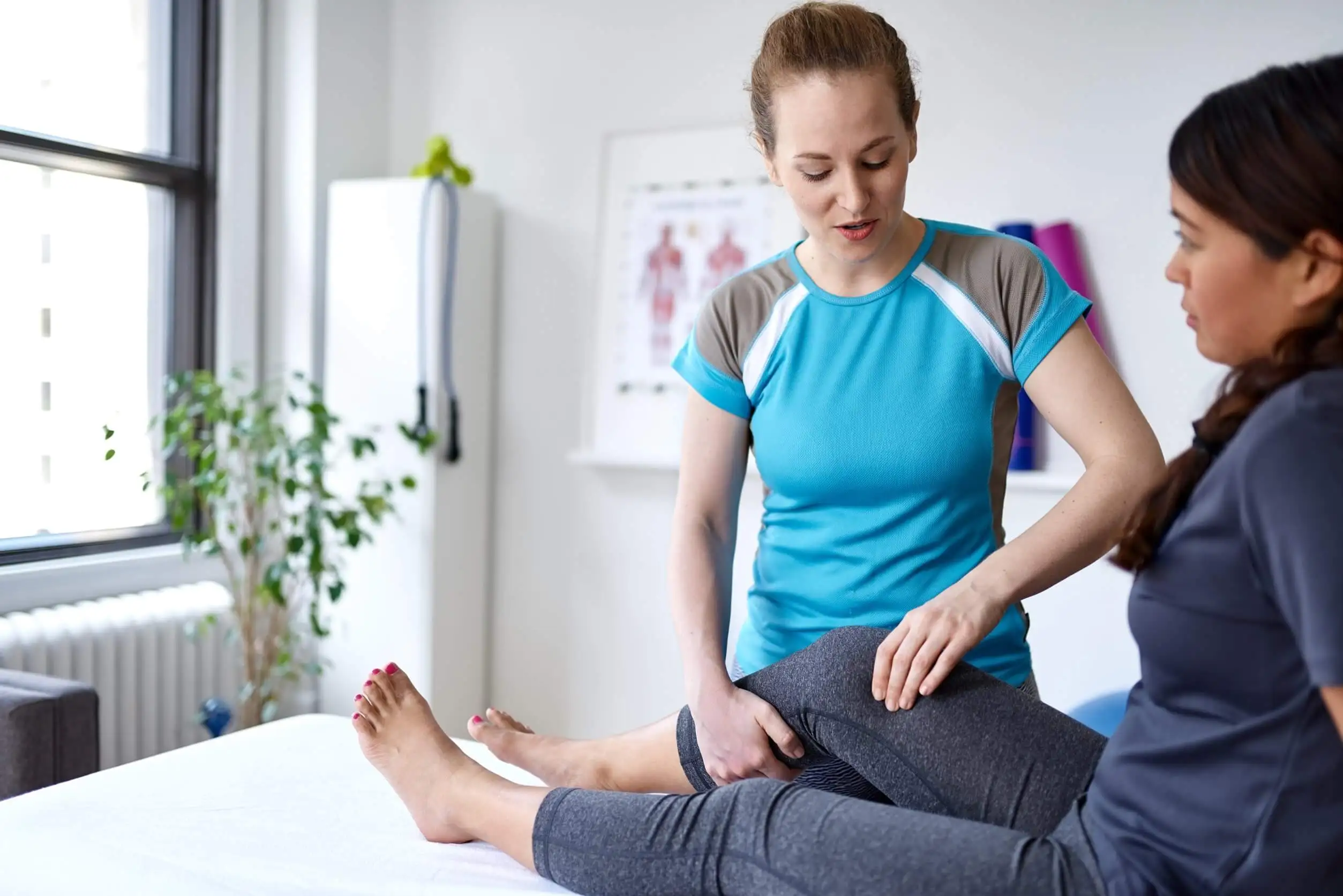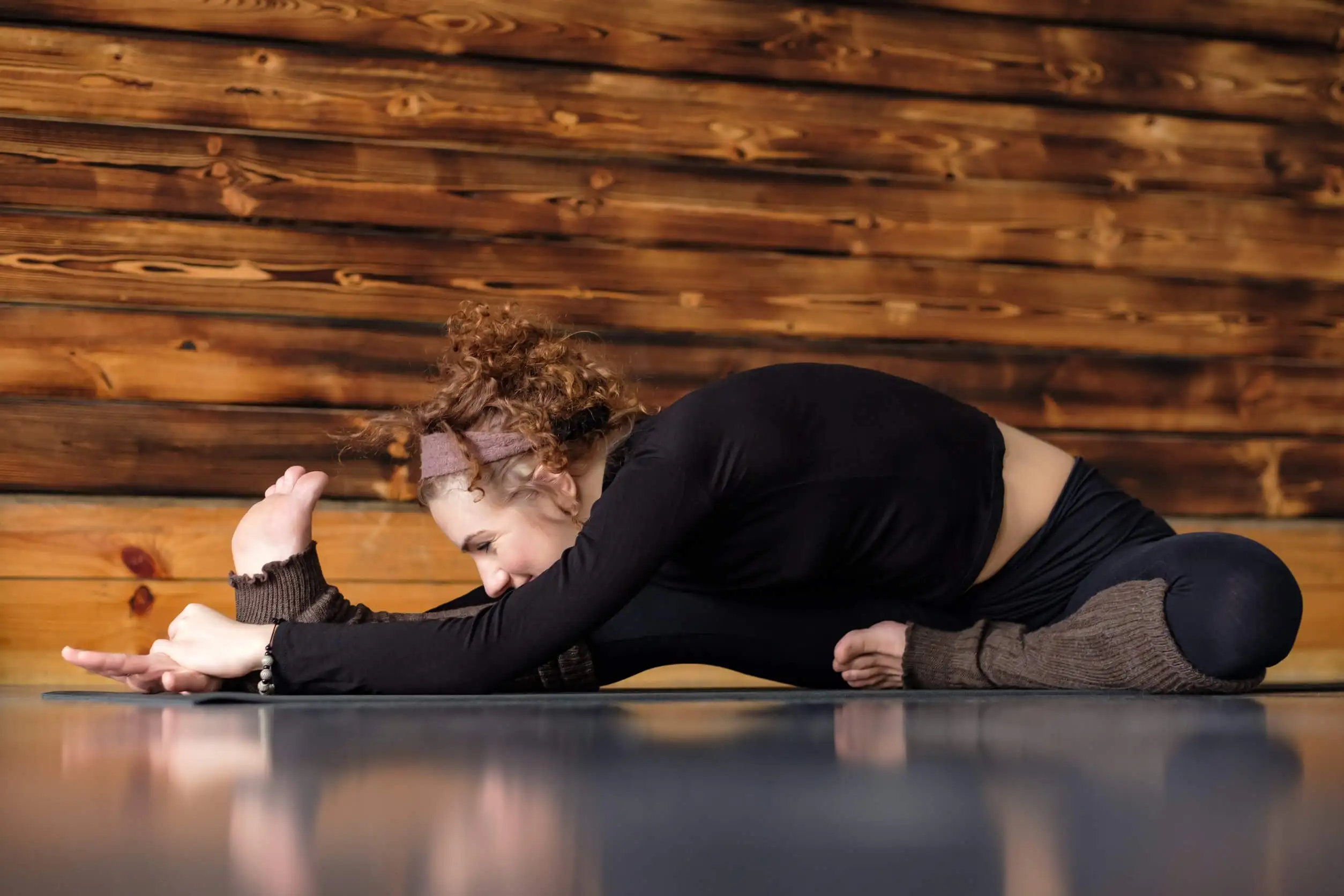24 Common Injuries in Dancers


Reviewed and approved by the nurse Leidy Mora Molina
Despite the sublime nature of dance and the showy movements, injuries are common in dancers. It’s not uncommon for them to experience pain, after long hours of rehearsals, which require the performance of great efforts and repetitive movements.
Often, this occurs because of the dynamics of the work itself, but it can also be a high level of self-demand. Different types of dancing include actions such as jumping, spinning, standing on tiptoes, excessive arching of the back, stretching, or spreading the legs. This can lead to strain, inflammation, contractures, sprains, strains, wear and tear, and even fractures.
Common injuries in dancers tend to occur in the lower body, such as the waist, hips, knees, and feet.
The causes of common injuries in dancers
In dance, performing the movements requires strength, flexibility, endurance, precision, and coordination. Whether it’s a solo, a duet, or a group piece, long hours of rehearsal are required.
However, this generates muscle stress, wear and tear, or pain. It’s also not uncommon for a bad movement to occur.
In this regard, research shows that when dancers are fatigued by repetitive strain, joint mechanics are likely to be affected. In this vein, the factors most associated with common injuries in dancers are as follows:
- Impact or collision with a partner or some element
- Unsuitable floors (uneven or very hard)
- Bad movement or forced movement
- Lack of rest or recovery
- Inadequate training
- Lack of warm-up
The most common injuries in dancers
The most common injuries in dancers take place in the lower extremities; however, this is not exclusive, as they also occur in the upper spine. Let’s take a look at what they are.
1. Spondylolysis
Sports practice and dance have been associated with spondylolysis. This is a crack or break in a vertebra. It may be due to a birth problem, injury, or stress from repetitive use.
2. Disc injury
According to research, prolapsed or herniated intervertebral discs are common injuries in dancers. This is due to repetitive bending, twisting, or lifting of the trunk.
3. Strain and spasms
In people who practice dance, when arching and stretching the back very often, strains and spasms occur. This may also be due to a muscular imbalance between the back and the abdominals.
4. Low back spondylolisthesis
In spondylolisthesis, there’s one vertebra that moves or shifts in relation to the one below it. This can occur in many athletes.
The risk for dancers is often high, due to factors such as overexertion, poor biomechanics, rehearsing barefoot or in improper shoes, as well as working on hard floors.
5. Hip snaps
Although it starts as a simple dry snap in the anterior aspect of the hip, over time, due to tension in the iliotibial band, it tends to become painful. This condition involves the contraction of the tendon over the front with the hip rotation movement.
6. Hip impingement
Like the previous one, hip impingement is related to continuous movements, when the two parts of the joint (acetabulum and femoral head) collide, producing wear and tear.
We think you may be interested in reading this, too: The Injuries and Ailments that Kept Serena Williams Off the Courts for a Year
7. Ciatalgia
This is an irritation of the sciatic nerve. In the case of classical ballet, it’s likely to be caused by poor technique or overuse due to microtrauma from jumps and falls.
8. Sore hamstrings
When lifting the leg to make a kicking motion, the muscles of the back of the thigh are fully stretched, up to the maximum range. Performing this action can lead to injury, especially when you haven’t warmed up first.
9. Fibrillar rupture
A fibrillar rupture is caused by elongation or sudden contraction of the muscle, or by excessive strain. It occurs frequently in the back of the thigh in dancers and athletes, such as tennis players, soccer players, and runners.
10. Bursitis by friction
Bursitis is an inflammation in the bursa, that area of cushioning that is between the bones and tendons or muscles. In dance, the bursa of the patellar tendon can be affected as a result of knee flexion and extension movements.
11. Patellar tendonitis
In addition to the above, another common injury in dancers is inflammation (tendonitis) due to the accumulation of sudden movements in the patellar tendon.

12. Patellofemoral syndrome or jumper’s knee
This may be due to a combination of factors, including muscle imbalance, tight hamstrings or calves, and weak quadriceps. This causes the impact to fall on the kneecap when jumping. Pain is even felt when bending the knee and climbing stairs.
13. Meniscus tears
Dancers may experience cartilage tears in their knees. The meniscus can be damaged by jumping or twisting the knee with the full weight of the body resting on it; including by insufficient quadriceps musculature.
14. Bursitis or goosefoot
It’s called goosefoot when the bursa located between the tibia bone and the three tendons that connect the sartorius, semitendinosus, and internal rectus muscles. Goosefoot bursitis is due to overuse of the knee and tight hamstrings.
15. Fibrillar rupture of the calf
In fibrillar rupture of the calf (or, more concretely, the back of the calf), there’s intense pain, with swelling and difficulty in plantar flexion or standing on tiptoe. It can affect both athletes and dancers with little training.
16. Compartment syndrome
It is an extremely painful condition, due to increased pressure in a muscle compartment, caused in turn by internal bleeding or inflammation of the tissues. In the case of the tibial and peroneal muscles of dancers, this hypertrophy finds its origin in overuse and fatigue.
17. Achilles tendonitis
As the name implies, it is an inflammation of the tendon at the back of the ankle, known as the Achilles tendon. It’s widely used in dance to put the foot on tiptoe.
18. Ankle sprains
When there is a bad landing after a jump, a lateral movement during a turn, or any other movement that forces the joint out of its normal range of motion, the ankle becomes inverted and can collapse. Ankle sprains are among the most common injuries in dancers.
19. Ankle impingement
Ankle impingement occurs when a sprain is not properly treated, although it can also be due to a repeated inversion motion. In dance, positions that require standing on tiptoe involve acute pain for the person.
20. FHL tenosynovitis
This is named after the flexor hallucis longus, which is the big toe. This tendinopathy is also among the common injuries of dancers.
It’s due to excessive stress on the aforementioned tendon. It can cause a type of stiffness known as trigger toe.
Like this article? You may also like to read: Infiltrations: The Technique that Helps Relieve Pain and Injuries
21. Sesamoiditis
Despite its somewhat strange name, sesamoiditis is one of the most common injuries in dancers, to the point that it is also known as dancer’s toe. It’s the result of the accumulation of microtrauma when falling on mid pointe.
22. Talalgia
This is an inflammation of the cartilage of the calcaneus. It presents with pain in the fat pad of the heel, which is the part that cushions the impact when stepping. It is more common in young people who are just starting out.
23. Fracture of the fifth metatarsal
Also called a dancer’s fracture, it occurs in the bone that connects the little toe to the midfoot. The most common causes of this injury in dancers are stress and overuse, especially when turning the ankle while standing on tiptoe.
24. Hallux valgus
Although this is considered more of a deformity than an injury, this type of bunion is quite common in dancers. This may be due to the early start of training, without the development of the musculature of the foot, and the continuous load of weight on the same point.
Treatment of common injuries in dancers
For milder injuries, immobilizing, icing, taking an analgesic, and keeping the foot elevated may be sufficient. Those injuries of a moderate level will require a longer period of rest.
For more severe injuries, in addition to prolonged treatment and rest, with total immobilization, it’s suggested to develop a program of rehabilitation treatments. Similarly, it’s advisable not to return to practice immediately after recovery, but to do so gradually.
The prevention of injury for dancers
Some of the common injuries to dancers are unavoidable, such as those related to accidental circumstances. However, those related to poor technique or fatigue are predictable.

Supplemental training
In some cases, the cause of injury is a lack of muscle strengthening. If you notice that you lack strength when performing certain movements, you should work on weight-bearing exercises to develop the muscles.
Strengthen your core to improve your stability
Another type of exercise that is very useful for dancers is those that have to do with the core. According to research, this can help to maintain stability and avoid movements that can lead to injury.
Wear bandages
There are joints that have been injured or may be prone to injury. Preventive functional taping or other types of pads can be used to partially limit painful movement and reduce instability.
Warm-up
Before practice, exercises and movements should be performed to help the muscles warm up. This is a must for those attending professional academies.
Flooring
Elastic flooring reduces pressure on the ankle and knee joints. They also prevent the heel from striking too hard when falling.
Learn the correct technique
In all movements, you should always be sure of the correct form. Practicing in front of a mirror, observing and recording yourself to avoid a bad movement can mean injury prevention.
Rest properly
It’s not only important to get the necessary hours of sleep every night; it is also important to take a break from activity, avoiding overtraining. Cross-training and active rest not only help the muscle to recover but also help to refocus the mind.
Be attentive to the body and its signals
Whether you study dance, practice professionally, or simply dance for pure pleasure, this is an activity that generates great benefits. However, a bad movement or an excess of activity is also harmful.
In some cases, it’s possible to prevent injuries. Pay attention to when the body begins to warn that something isn’t right. If the pain experienced after dancing or during activity goes away in a short time (no more than 24 hours), then perhaps it’s nothing to worry about.
If it becomes continuous or recurrent, even if it’s intermittent, then it’s no longer normal. You may be starting to suffer from an injury.
That means it’s time to see your doctor and tell him or her what you’re feeling to address the problem early on. The sooner the better.
All cited sources were thoroughly reviewed by our team to ensure their quality, reliability, currency, and validity. The bibliography of this article was considered reliable and of academic or scientific accuracy.
- Del Corral A, Forriol F, Vaquero J. Cómo prevenir y curar lesiones deportivas. Navarra: Eunsa, 2005.
- Frontera W. Medicina deportiva clínica. Tratamiento médico y rehabilitación. Madrid: Elsevier, 2008.
- Grisogono V. Lesiones de rodilla: una guía práctica para la recuperación y el autocuidado. Madrid: Eyras, 1990.
- Gutiérrez J. Las lesiones deportivas. México: Aguilar, 1997.
- Howse J. Técnica de la danza y prevención de lesiones. Paidotribo: Madrid, 2003.
- Kolber, M. J., Nau, E., & Hanney, W. J. (2009). Acondicionamiento de la Columna Vertebral para Atletas con Espondilólisis y Espondilolistesis Lumbar. PubliCE Standard.
- Ramkumar P, Farber J, Arnouk J, et al. Injuries in a professional ballet dance company. Journal of Dance Medicine & Science. 2016; 20(1): 30-7
- Russell JA. Preventing dance injuries: current perspectives. Journal of Sports Medicine. 2013; (4): 199-210.
- Watson, T., Graning, J., McPherson, S., Carter, E., Edwards, J., Melcher, I., & Burgess, T. (2017). Dance, balance and core muscle performance measures are improved following a 9-week core stabilization training program among competitive collegiate dancers. International journal of sports physical therapy, 12(1), 25.
This text is provided for informational purposes only and does not replace consultation with a professional. If in doubt, consult your specialist.








